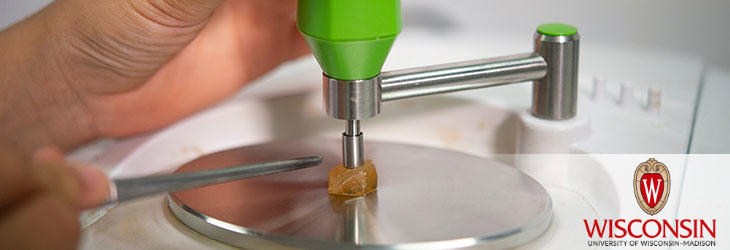Research Tools

New Amphiphiles for Manipulating Membrane Proteins
WARF: P09028US02
Inventors: Samuel Gellman, Pil Seok Chae
The Wisconsin Alumni Research Foundation (WARF) is seeking commercial partners interested in developing cholate- and deoxycholate-based amphiphiles that are easy to synthesize and represent unique tools for membrane protein research.
Overview
Membrane proteins perform many crucial functions in vivo but are difficult to manipulate and study because they are not soluble in simple aqueous buffers. Solubilizing membrane proteins for physical characterization and crystallization requires them to be combined with a synthetic amphiphile – typically a detergent. This detergent plays an important role in determining whether high-quality crystals will form.
The number of amphiphiles commercially available for solubilizing and stabilizing membrane proteins is limited. More options would advance fundamental and applied protein research. Preferably, new amphiphiles should be synthesized from readily accessible starting materials and function at lower concentrations relative to commonly used detergents such as CHAPS and CHAPSO.
The number of amphiphiles commercially available for solubilizing and stabilizing membrane proteins is limited. More options would advance fundamental and applied protein research. Preferably, new amphiphiles should be synthesized from readily accessible starting materials and function at lower concentrations relative to commonly used detergents such as CHAPS and CHAPSO.
The Invention
UW–Madison researchers have developed improved amphiphiles for solubilizing, isolating and characterizing membrane proteins. They can be prepared from cholic acid, deoxycholic acid and lithocholic acid, which are steroids found in bile.
The new amphiphiles, called CAO, DCAO and LCAO, are effective in challenging biochemical systems, such as extraction of delicate photosynthetic superassemblies from native lipid bilayers.
The new amphiphiles, called CAO, DCAO and LCAO, are effective in challenging biochemical systems, such as extraction of delicate photosynthetic superassemblies from native lipid bilayers.
Applications
- Solubilization, isolation, purification, stabilization, crystallization and/or structural determination of membrane proteins
Key Benefits
- Effective at concentrations lower than currently available detergents
- Easy to synthesize
- Low critical micelle concentration (CMC)
Stage of Development
The new amphiphiles have been shown to perform as well as known biochemical detergents (CHAPS and CHAPSO) but at significantly lower concentrations.
Additional Information
For More Information About the Inventors
Related Technologies
Tech Fields
For current licensing status, please contact Rafael Diaz at [javascript protected email address] or 608-960-9847